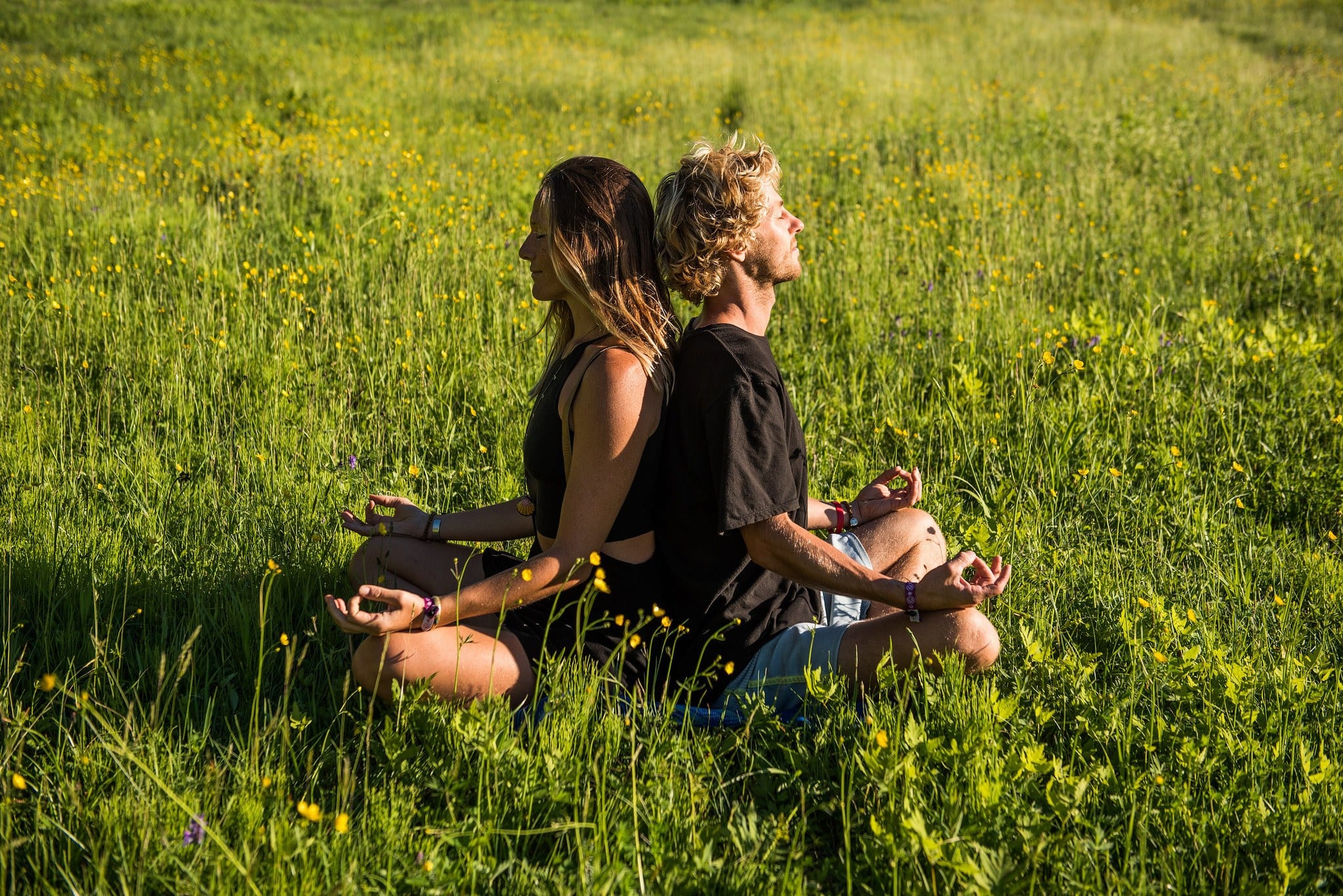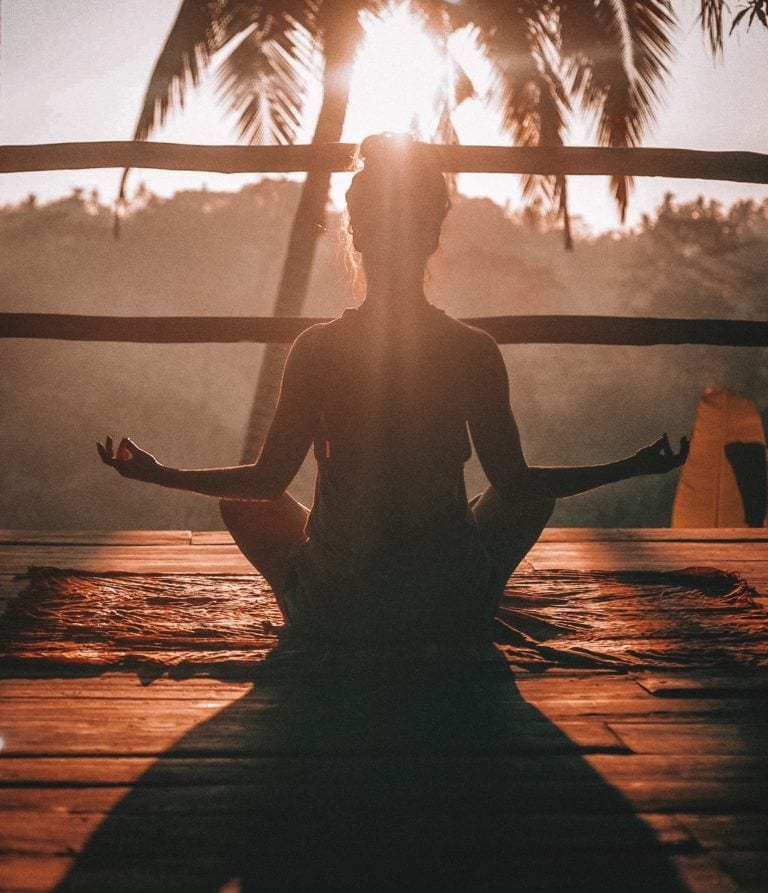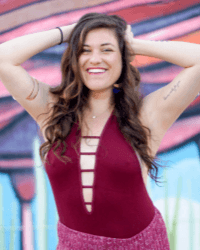
Learn with Emily directly at Wanderlust Brooklyn!
With so many styles, adaptations and applications, meditation can feel like an elusive concept. It may be a lifesaver, but it can also feel like something everyone tells you you should be doing but you aren’t sure how to grasp. Emily Fletcher, founder of Ziva Meditation has designed a technique specifically for help high performers integrate and master meditation—even if they claim to be too busy to do so.
Her debut book, available on February 19, Stress Less, Accomplish More: Meditation For Extraordinary Performance brings her technique—along with the science behind meditation’s many benefits—to the masses. Her humor and candor make this book an easy and enlightening read for seasoned practitioners and newbies alike, not to mention this is the book to recommend to that friend who seems to always complain about stress yet never take you up on your recommendation that they meditate.
This is not just another meditation book. In Stress Less, Accomplish More, Emily teaches the trifecta of Mindfulness, Meditation, and Manifesting to improve your personal and professional performance, clarity, health, and sleep.
“We meditate to get good at life, not at meditation,” quips Emily, reminding us that the point is deeply profound energetic shifts we are capable of making in our lives when we adopt this kind of practice, not simply to say that we are capable of clearing our mind. (Which she tells me is impossible). Curled up in Emily’s West Village apartment, with her adorable six-month-old joining for this interview, Emily gave me the insight behind meditation, mindfulness, manifestation, magic-making and more.

Cara: What inspired you to write this book?
Emily: Honestly, I am tired of people saying that they don’t have the time to meditate. Many people don’t know the difference between mindfulness and meditation. So, what this book aims to do is rebrand meditation as a productivity and performance tool, so that people can see that it will actually help them accomplish their goals with more ease and less stress.
Cara: I know in the book you talk a lot about the difference between mindfulness and meditation, but if you could just give us a little sneak peek into exactly what you are referring to?
Emily: Where this gets confusing is people are using mindfulness and meditation as synonyms. Most of the “meditation apps” and “guided meditations” on YouTube, and even meditation studios are teaching what I would call mindfulness, which is the art of bringing your awareness to the present moment. This is very good at dealing with your stress in the now. The type of meditation that I teach in the book is about getting rid of your stress from the past. It’s about getting the deep, healing rest that can combat the stress and tiredness that is making us stupid, sick, and slow. When you eradicate the backlog of stress in the nervous system, that is what uplevels your productivity and performance capabilities.
Cara: I love that! A lot of people who are familiar with Wanderlust tend to already have a strong and active practice of meditation, and then when they are talking to people in their live to whom they want to recommend it, that’s when we hear, “Oh I’m just not someone who meditates,” or “I don’t have time for that.” So for people who want to help those that they care about embrace meditation and some of the lessons in your book, what is the best way to have that conversation?
Emily: This is a beautiful use for the book. For people who don’t have a practice, this is a great starting point. And for people who do, this book has equipped you with the perfect rebuttal to “I can’t clear my mind, I don’t have enough time.” It is all the neuroscience behind why stress is making us stupid, sick and slow. The best way to share with your loved ones is, “Hey, this book actually covers the neuroscience behind why meditation can help you have better sex, better parking karma, make more money, reverse your body age, and improve your immune function.”
That is the first five chapters of the book right there, and it breaks it down benefit by benefit. The best argument is to not have an argument. The most helpful thing that you can do is share your experience, and then say “Here is all the science broken down for you. One of the world’s leading doctors wrote the foreword; a leading neuroscientist from Stanford wrote the preface, this woman’s taught 15,000 people how to meditate. It will take a few hours and it could change the rest of your life.”
Cara: That was one of the things that I liked about the book. It felt like a really easy read, digestible for people both on the “spiritual,” “mindful,” “wellness” path, but also a door opening invitation for people who weren’t. Was that your intention? Who is this book for?
Emily: Yes, my superpower is making meditation accessible, attractive, and easy to adopt. This book is a great starting point for anyone who is curious but a bit skeptical. It is for people who want scientifically verifiable benefits, and it is also a tool for people who already have a practice to share with their friends and family.
Cara: For people who already have a practice, how can this enhance it or be a tool for them?
Emily: For one, it goes deep into the difference between mindfulness and meditation. Most people are practicing what I would call mindfulness; this may be a new technique for them. It also talks about the importance of twice a day. For people who are only meditating once a day, it breaks down why twice a day is so important. Like anything, we can get stuck, and in a rut or get stagnant. And in that case, having an intellectual reframe or deepening can reignite our personal practice.
Cara: Twice a day versus once a day, let’s talk more about that.
Emily: Once a day is really good at dealing with all of your stress from today: “My boss yelled at me, my kids were screaming, I am stressed, I can meditate, it will clear out stress from today.” But if you want to get rid of that backlog of stresses that have been accumulating, you gotta do it twice a day. This ushers us into higher states of consciousness, it carves out a lot of stress that has been stored in the cellular memory so that we have more capacity, more adaptive energy for the task at hand.
Cara: That completely makes sense. However, I feel people may struggle with integrating a twice-a-day practice if they are committed to another style at a certain time. For people who may be doing a training program or studying a specific kind of meditation where their practice is calling them to commit to a regime of meditation that deviates from the one in your book, how can they partner or pair the Ziva Technique with their training methodology?
Emily: There is nothing preventing people from doing multiple types of meditation, as long as they understand the differences and that they are not trying to do both at the same time. Where people mess themselves up is when they try to do a focusing practice and a surrendering practice simultaneously and then feel frustrated when they can’t clear their mind. It’s confusing to focus and also surrender at the same time; it feels like a fish-milkshake. But, if you do multiple practices in a day, beautiful.
I would recommend starting with something like breathwork or mindfulness and then moving into surrender or more restful practices, and ending with some sort of visualization, prayer or manifesting. That’s what we do in the Ziva Technique, we do mindfulness into meditation into manifesting. But I would say that you could absolutely do a morning hour-long practice, and then do your fifteen minutes of the Ziva Technique as your afternoon pick-me-up, like a shot of espresso (without the jitters or comedown).
Cara: One of the things that I really liked about the book were all of the little Ayurvedic secrets that you wove in. What are your favorite wellness trends and secrets? I’ve been telling everyone who tells me they are getting sick, “Just meditate three times a day and you’ll be fine,” ever since I read the book.
Emily: The black pepper tea is a real winner. I have people tweeting and DMing me all the time, “I had black pepper tea, it kept me from getting sick!” It is also probably the cheapest and easiest. So if you feel a cold coming on, take organic black pepper grinder. Grind six grinds of it into a mug, pour some hot water over it. Let the grinds sink to the bottom and the then just drink the water. It can help you sweat out a fever.
Cara: I love that one! I told my mom about it! I used it too, and it totally prevented me from getting sick. What should people who love the book and want more know?
Emily: So glad you asked! The book, as we mentioned, an entry point and give you a solid intellectual understanding of why you would even “waste your time” meditating in the first place. But if people want to dive deeper, I would recommend zivaONLINE which is our 15 day online training. That is 15 minutes a day for 15 days. You get a more powerful mantra than the one in the book, you get an online community, daily emails in your inbox, an advanced follow up course that anticipates your challenges moving forward, access to monthly calls with me and all the Ziva teachers and long term meditators. zivaONLINE is a great next step, particularly if you can’t fly to New York or LA to learn in person.
Cara: And if they did want to travel?
Emily: We do live courses about once a month in NY in LA, which is two hours a day for four days and you graduate with what I call is the “Maserati of meditation practices,” it’s fast, it’s powerful, and I think it makes you sexier. Every time I teach it, it’s such a gift, it feels like a tribe has been created, there is a sense of community. And people leave with a powerful daily practice. In this day and age of wifi, apps, and quick fixes, we have kind of lost our sense of self-sufficiency. If you rely on your phone to charge and a quiet corner and headphones, there are really a lot of things that can “prevent” you from meditating.
Sometimes when someone else is guiding you through something it keeps you in your left brain, and what Ziva does is it invites you to drop in to your right brain and de-excite your nervous system. Additionally, once you graduate no one can take these tools from you; you have them for life. You can do this anywhere: in an Uber, with your kids screaming in the next room, in your open floor office space, on an airplane. Just like the coffee you drank two weeks ago is not going to give you energy today, the meditation you did two weeks ago is not going to give you more clarity, focus and creativity today. You have to do it every day, which is why self sufficiency is so powerful.
Cara: Yes! Self sufficiency is so powerful! For the Wanderlust community, where can we see you at Wanderlust this summer?
Emily: I’ll be teaching my first one day intensive [Immersions] at Wanderlust Stratton, which is a new format for me so I am really excited. I’m also leading my first festival wide mass meditation! I will be at Wanderlust Brooklyn this summer. There will be a Speakeasy talk, and definitely a guided meditation.
Ready to take mindfulness, meditation, and manifesting to the next level? Stress Less, Accomplish More will hit the shelves on February 19. Preorder it for an exclusive preview of Ziva Online training, three guided exercises from inside the book, and Emily’s “Day In The Life” Guide for extraordinary performance.
—
 Cara Kovacs is a third generation healer, second generation oracle, and Sex, Love & Relationship expert trained by Layla Martin. Named as 2019’s one of “35 People Under 35 To Watch In Wellness” by Wanderlust, she combines modern science with ancient healing and spiritual philosophy to help bring people to truth through love. Past featured events have included Bustle Rulebreakers ft. Janelle Monae & The Big Quiet, Lollapalooza, Austin City Limits, Wanderlust Festival, partnerships with Employees Only, Root Mamma, Salt Witch Studios, Soho House, Freehand Hotels, LadyBoss Social Club, Alchemist Kitchen, and more. She is an official card reader for The Poetry Society of New York and has been featured in Time Out, Cosmopolitan, Bustle, and Elite Daily.
Cara Kovacs is a third generation healer, second generation oracle, and Sex, Love & Relationship expert trained by Layla Martin. Named as 2019’s one of “35 People Under 35 To Watch In Wellness” by Wanderlust, she combines modern science with ancient healing and spiritual philosophy to help bring people to truth through love. Past featured events have included Bustle Rulebreakers ft. Janelle Monae & The Big Quiet, Lollapalooza, Austin City Limits, Wanderlust Festival, partnerships with Employees Only, Root Mamma, Salt Witch Studios, Soho House, Freehand Hotels, LadyBoss Social Club, Alchemist Kitchen, and more. She is an official card reader for The Poetry Society of New York and has been featured in Time Out, Cosmopolitan, Bustle, and Elite Daily.